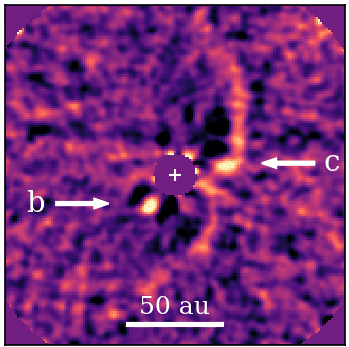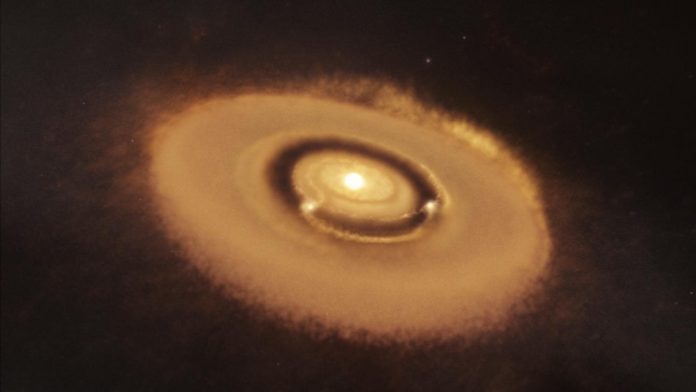Using a new infrared pyramid wavefront sensor for adaptive optics (AO) correction at W. M. Keck Observatory on Maunakea in Hawaii, a Caltech-led team of astronomers captured the first-ever pictures of the birth of a pair of giant planets orbiting the star PDS 70.
PDS 70 is the primary known multi-planetary system where astronomers can observe planet formation in action. The main direct picture of one of its planets, PDS 70b, was taken in 2018, followed by numerous images taken at various frequencies of its kin, PDS 70c, in 2019.
Jason Wang, a Heising-Simons Foundation 51 Pegasi b Fellow at Caltech and lead author of the study, said, “There was some confusion when the two protoplanets were first imaged. Planet embryos form from a disk of dust and gas surrounding a newborn star. This circumstellar material accretes onto the protoplanet, creating a kind of smokescreen that makes it difficult to differentiate the dusty, gaseous disk from the developing planet in an image.”
To help give clearness, astronomers built up a strategy to unravel the image signals from the circumstellar disk and the protoplanets. By applying their new method, they were able to take family photos of the baby planets or protoplanets and confirmed their existence.

Using the Near-Infrared Camera (NIRC2) on the Keck II telescope, astronomers snapped the images of PDS 70. This made first science for a vortex coronagraph installed in NIRC2 as part of a recent upgrade, combined with the Observatory’s upgraded AO system consisting of a new infrared pyramid wavefront sensor and real-time control computer.
Wang said, “We know the disk’s shape should be an asymmetrical ring around the star whereas a planet should be a single point in the image. So even if a planet appears to sit on top of the disk, which is the case with PDS 70c, based on our knowledge of how the disk looks throughout the whole image, we can infer how bright the disk should be at the location of the protoplanet and remove the disk signal. All that’s leftover is the planet’s emission.”
Sylvain Center, a software engineer at Keck Observatory and one of the lead developers of the AO upgrade, said, “The new infrared detector technology used in our pyramid wavefront sensor has dramatically improved our ability to study exoplanets, especially those around low-mass stars where planet formation is actively occurring. It will also allow us to improve the quality of our AO correction for harder to image targets like the center of our galaxy.”
Peter Kurczynski, Program Director at the National Science Foundation, said, “New technology is a science multiplier. It enables investigations that were never before possible.”
Charlotte Bond, who played a vital role in the design and installation of the technology, said, “The PDS 70 imagery Jason’s team captured was among the first tests of the scientific quality produced by Keck’s pyramid wavefront sensor. It’s exciting to see just how precise the new AO system corrects for the atmospheric turbulence of dusty objects like the young stars where protoplanets are expected to reside, allowing for the clearest, sharpest view of baby versions of our solar system.”
Journal Reference:
- Jason J. Wang, Keck/NIRC2 L’-Band Imaging of Jovian-Mass Accreting Protoplanets around PDS 70. DOI: 10.3847/1538-3881/ab8aef
